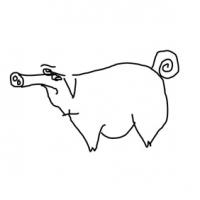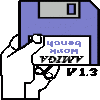If you've got multiple 2d images with shared features, you can stitch them into a panorama. Same with overlapping 3d scans -- no need for GPS, just line up the shared details (either automatically, or by hand).
And yes, collection of photos / video walk though -> point cloud is a solved problem.
Once we were sent footage of an industrial area and told to recreate the footage as an in-game cutscenes - we started by converting the footage to a point cloud of that area, before modeling the buildings... And that was with cheap software and unannotated footage.
If you know the motion of the camera and have a bigger budget, you can do much better. See
http://en.m.wikipedia.org/wiki/Structure_from_motion
I'm inclined to believe this data is just a smoke and mirrors show. They probably got a reasonably high-res sattelite scan from somewhere, just large enough area so the demo looks stunning, and then they spent 6 months and a team of 20 artists filling in the detail (in the selected areas where the camera zooms close by).
but their product is about data visualization, not data acquisition. They're not even showing off their own data, theyre using client's data (which yes, could be acquired in many ways). To supplement an arial scan it would be much cheaper for that client to drive a van around the city for a few days, than to hire artists...
They're selling it to people who have already acquired data, or people in the acquisition business. There's a lot of companies in the GIS business who will chare you big bucks to deliver exactly this kind of data. They're not the ones on trial here ;-P
The company showing off the detailed 3D construction site is unrelated to Euclideon. They already offer this service, and that visualization is using triangulated meshes, not Unlimited Detail. There's no point in the pretending they can do change detection with faking-via-artists if they can't really capture that data -- it's just a lawsuit waiting to happen when they can't deliver on contractural obligations. One things for sure though - these kinds of services aren't cheap!
LIDAR flyovers can do sub-metre resoluton, but military imaging radar can produce point clouds with a resolution of about 2mm, which is enough to be able to analyze specific tyre tracks in dirt, or do change detection on said dirt to tell which tank moved where by following the tracks (I worked on a simulator for them once) And they put them on high altitude flights, satellites and the space shuttle for fun...









